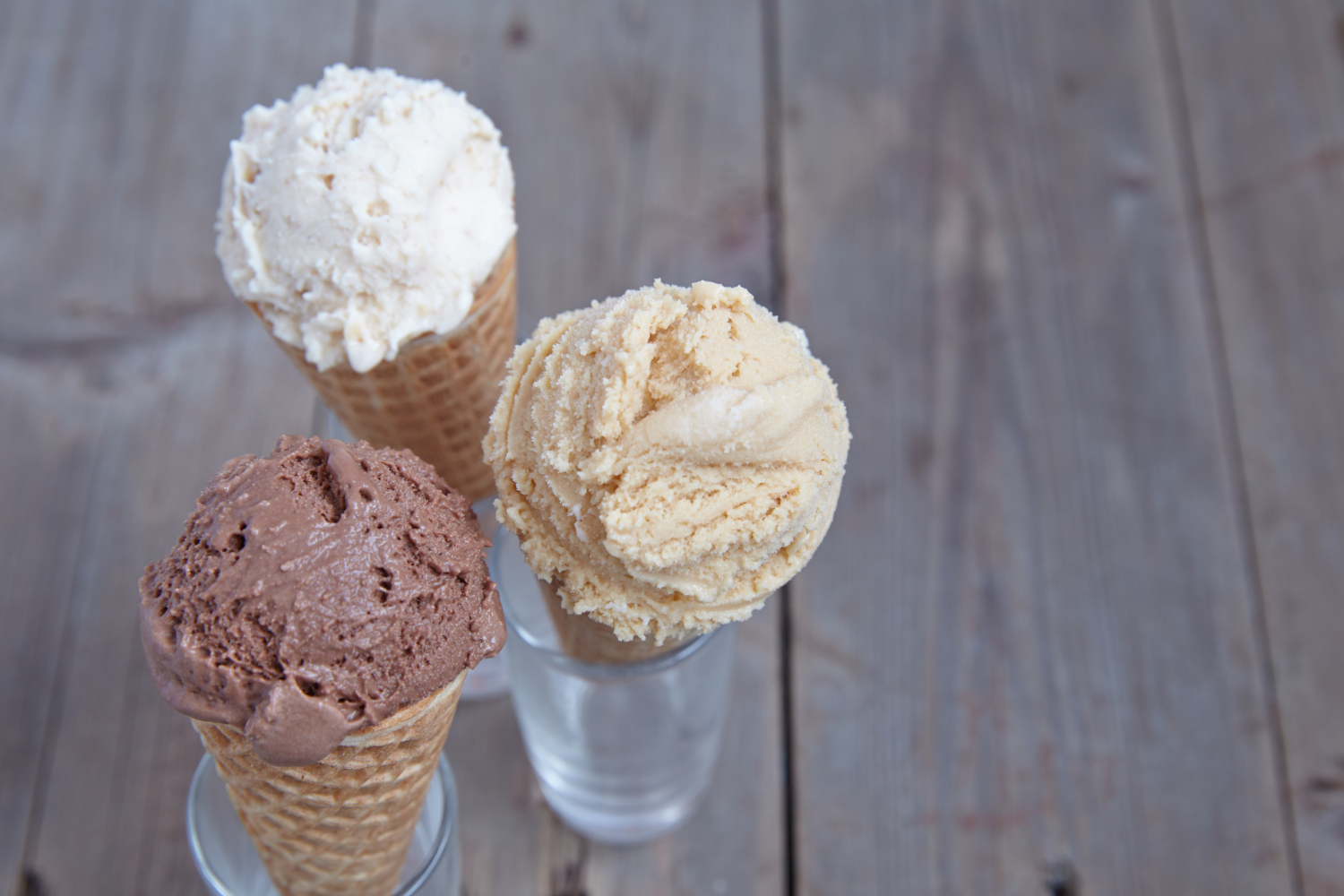We know that in manually operated ice-cream machines, salt gets combined with ice. We observe that results are produced, and indeed, ice-cream is produced. But you could never put your head around such a concept.
Why there’s salt? Is salt necessary for ice-cream making?
Water freezes at 32°F (0°C), but any smidgen over that will also be melted. The sugar and the fats in the mix interfere with creating ice crystals. The ice-cream freezes at a cooler temperature. Using ice straight to chill the ice base is not recommended since the ice will melt before the ground gets cold enough.
The solution is salt. Like sugar, salt impacts the freezing and efficient reduction of water freezing/melting point. By creating a slush of saltwater and packing around our ice-cream foundation, you can cool down enough to start thickening and freezing before the ice shrinks.
Different salt variants can be used to prolong the ice’s solid-state. While home cooks use regular table salt, ice-cream salt is highly recommended. Unlike table salt, ice-cream salt can retain the solidity of ice for longer hours. This is essential in maintaining the cream’s viscosity.
While ice-cream salt is also made with the same salt used for food consumption, you might need to check the product’s description before you consider mixing it with your food.
What Is the Difference Between Ice-Cream Salt and Regular Salt?
Making ice-cream is an everyday activity throughout the summer. Although there are different ways of doing this, there are always specific steps in the process. The hardest thing is to freeze the cream. Freeze it too fast, then crystallize and crush your ice-cream. You’ll be left with a mushy mess if you freeze it too slowly.
Regular salt, also known as table salt, is used as an alternative to ice-cream salt. While it has more prominent grains than iodized salt variants, it may still contain smaller grains, affecting the ice’s hardness.
Salt dissolves ice in the bath, and melting ice absorbs the cream mixture’s heat. Other types of salt will work instead of rock salt, but cream freezes risk too quickly owing to the uneven distribution and the smaller size of the grain.
Rock salt is utilized rather than table salt, as its grains are more extensive and spread across the ice bath more evenly. Smaller table salt grains are denser than rock salt. When using regular salt, be careful with the amount you add to the ice bath.
In addition to the greater grain size and easier control over the freezing process, rock salt also has the virtue of being cheaper than table salt. Ice cream can make a lot of salt. Rock salt is sold in pound sacks, and table salt does not commonly come in bulk.
Can Ice-Cream Salt Hurt You?
Ice cream salt is a salt variant used for homemade ice-cream. It is not blended with other components but is instead utilized for colder freezing of the ice. If salt is not added to ice, the cold temperature of the ice cannot be sufficient to freeze the ice. This salt is applied to the ice-cream maker’s external containers, and the indoors are filled with the ingredients.
Ice cream salt is not blended with ice-cream components. It is not even considered edible, in fact, and the ice-cream is never contacted. Instead, it is integrated into ice or ice water, placed in an ice-cream manufacturer’s outer chamber.
Certain manufacturers such as Morton® Ice-Cream Salt is marketed as a material “not intended for use in food.” This is because silica and other minerals may still be found on the product. The company also recommended that the ice-cream salt be used for ice making or any elements that directly contact food.
While ice-cream salt is optimal for making ice-cream, its edibility is not the same. Ice cream salt is primarily made from rock salt. Rock salt is unprocessed salt with huge grains which frequently contain inedible contaminants. Ice cream salt may contain potassium chloride, calcium chloride, and urea (carbonyl diamide).
If consumed, it can irritate the gastrointestinal tract and abdominal pain. These chemicals can also be irritating to the skin and can cause mild to severe skin dryness. If you still want to use ice-cream salt for food preparation, check if the product you’ve purchased is food-grade quality.
Is Rock Salt Poisonous to Humans?
The majority of ice-cream salt, commonly called rock salt, is usually made of large salt crystals. It can also be applied on roadways and sidewalks to melt ice. While the cook may need to use more, table salt can replace it if necessary.
The National Capital Poison Center reports that a modest amount of rock salt may produce oral redness, rashes, or drool. Still, it does not typically cause severe problems. However, large doses of rock salt may cause sodium toxicity, resulting in convulsions, unconsciousness, and possibly death.
Aside from being the optimal salt for ice-cream making, rock salt can also melt icy roads and sidewalks. Rock salt has traditionally been used to prevent ice formation on outdoor surfaces in the winter months. It is not only a rich and natural material but also incredibly practical.
While salt melting snow and ice is practical and helpful, it poses specific human and animal health hazards. You should also be aware of various adverse effects concerning rust and potential harm to your property.
But that doesn’t mean that rock salt cannot be used for food preparation. As long as ice-cream salt and other rock salts don’t contact the food itself, it is safe for you. That is why washing the chilled container covered with rock salt is recommended to prevent cross-contamination.

